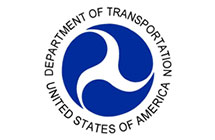 |
 |
|
| eNews • September 2015 | ||
| Promoting a Cost-Effective, Reliable and Competitive Transportation System |
||
 USDOT: Truck parking a growing national safety concern
USDOT: Truck parking a growing national safety concern
A shortage of truck parking capacity and information is becoming a nationwide safety concern, according to a survey published recently by the United States Department of Transportation.
The report, “Jason’s Law Truck Parking Survey Results and Comparative Analysis,” found that nearly half of surveyed state departments of transportation reported truckers have been forced to park on highway ramps and shoulders instead of designated parking areas, which tend to be much safer for the driver as well as other motorists.
According to the survey, over 75 percent of truck drivers and nearly 66 percent of logistics professionals reported regularly having difficulty finding safe - and legal - parking during rest periods, and that number jumped to 90 percent at night.
Recently-enacted hours of service rules require truck drivers to take 30-minute rests after eight hours of driving and for longer periods after 11 hours. The laws were intended to increase safety on the road by limiting the amount of time a driver could go continuously without stopping, but the truck parking shortage has proven an unexpected negative consequence.
USDOT found the majority of respondents reported truck parking shortages at all times of the day on every day of the week. The department’s analysis included ideas to address the issue, such as increased data collection on supply and demand, congestion, and safety with regard to truck parking, and called for the creation of a national coalition to further examine and tackle the shortage.
A major hurdle in addressing the shortage is the fact that there is no single government or private entity responsible for truck parking facilities. Further, 88 percent of the total 309,000 legal tuck parking spaces documented in the study are found at private truck stops, as opposed to public rest areas.
The matter is further complicated, however, by reports from truck-stop operators in the survey about difficulties in expanding truck parking. Truck-stop operators reported running afoul of environmental and zoning laws, as well as protestations from local communities that would prefer trucks stop elsewhere, according to the report.
The National Coalition on Truck Parking said it will continue working with the Federal Highway Administration, the Federal Motor Carrier Safety Administration, the American Association of State Highway and Transportation Officials, the American Trucking Associations, the Owner Operator Independent Drivers Association, the National Association of Truck Stop Operators and the Commercial Vehicle Safety Alliance to find solutions to the truck parking shortage.
In a statement from the administration, FHA Administrator Gregory Nadeau pointed to the group’s plan to address the growing deficit in transportation infrastructure projects via the six-year GROW AMERICA Act. The $478 billion surface transportation reauthorization proposal was tabled in Congress, however, as the legislature instead voted for another short-term extension before leaving for its August recess.
Nadeau said the funding provided by a long-term transportation bill “could be used to construct or expand truck parking facilities and deploy tools for commercial motor vehicle drivers to find safe, available places to park and rest.
“Without truck drivers, America’s businesses would suffer and the economy would come to a halt,” added Nadeau. “They deliver the goods and products we use every day, and are critical to freight movement in our country.”
“We know truck parking has been a longstanding problem in our nation - we need new approaches to fix it,” U.S. Deputy Transportation Secretary Victor Mendez said of the survey. “Now more than ever, this country needs better planning, investment and involvement of all those who have a stake in safe truck parking.”
FMCSA Acting Administrator Scott Darling echoed those sentiments, saying, “Highway safety depends in part on making sure hardworking, professional truck drivers have a safe place to recuperate after spending hours on the road. We at FMCSA are committed to addressing this shortage of safe and convenient truck parking for the drivers who do so much to advance our economy.”
The “Jason’s Law” survey was conducted as a requirement of the “Moving Ahead for Progress in the 21st Century” Act (MAP-21). In addition to state departments of transportation, the USDOT surveyed safety officials, trucker drivers, truck stop operators, and other trucking industry stakeholders.
Meanwhile, a separate study by the FHA released Thursday found that U.S. drivers set a record for the number of miles traveled in the first half of 2015.
According to FHA’s “Traffic Volume Trends” report, drivers travelled 1.54 trillion miles between January and June, beating the previous first-half record of 1.5 trillion miles set in 2007.
The nation’s driving has increased for 16 months in a row, the agency said in a statement, and the first half 2015 figures represent more than double the number of miles driven by U.S. residents in the same period in 1981. As Congress continues to debate transportation funding measures, the first half driving data “reaffirm[s] calls for increased investment in transportation infrastructure as demand on the nation’s highway system grows,” said FHA.
Source: American Shipper
Soy Transportation Coalition |
|
